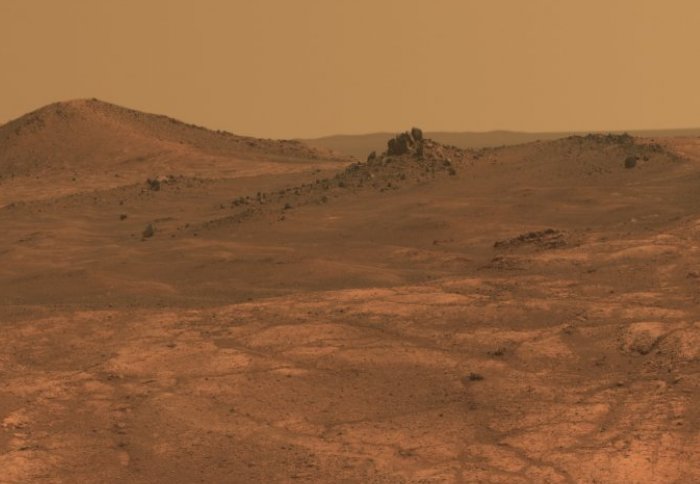Simple statistics improve the quality of digital images
by Simon Levey

Simple statistical software designed for electron microscope images can be used to improve pictures of everything from cells to the surface of Mars.
The quality of images from digital cameras is affected by variations in their digital light sensors. Variations in sensitivity and even broken pixels in the sensors are a natural consequence of the microscopic scale of their fabrication.
Manufacturers correct these variations by blending them with information from neighbouring pixels, based on a one-off assessment of the performance of the sensor. This creates pictures that look good to the naked eye but do not accurately represent the fine details of the image.
One wonders why nobody thought of this before
– Professor Marin van Heel
Research author
The new software, developed by researchers from Imperial College London and colleagues in the Netherlands, Germany and Brazil, can improve the reliability of pictures taken by a microscope camera. It determines the exact properties of each individual pixel, based on a statistical analysis of thousands of images, and adjusts the data captured by each pixel accordingly.
This improves the fine details of the whole picture, making it significantly more reliable. The researchers are exploring how this could improve the accuracy in many other imaging applications, such as in mammography used for breast cancer diagnosis.
The team of researchers behind this work have been writing electron microscopy software for film images since the 1980's. In the new study, published in Nature’s journal Scientific Reports, they propose a way to improve images produced by a new generation of digital cameras used in electron microscopy and show how the technology can be directly applied to a wide range of imaging devices in all fields.
Making the most of Martian images
To demonstrate its effectiveness, the scientists have used their statistical approaches to correct pictures taken by cameras on Nasa's Mars rover Curiosity, which are freely available online.
They applied the software to two different pictures of the red planet's surface from the rover's Mastcam-right camera. It found that both images contained 20 per cent similarities in their fine details that were inserted by the camera technology. Their new software repaired some obvious spots (pictured) and, improved the accuracy of the Mars images by 10-20 per cent.

"We spent billions of dollars taking pictures from Mars. We can't go up there to update the camera technology, so instead we can get more value out of them taking better quality images for scientific research," said research author Professor Marin van Heel, from the Department of Life Sciences at Imperial College London and the NeCEN microscopy centre at Leiden University in the Netherlands.
"The mathematics behind this approach is of an almost embarrassingly simple level of statistics such as you study at secondary school: the correction of averages and standard deviations. One wonders why nobody thought of this before."
Leaving behind 'single shot' photography
Professor van Heel explained: "Traditionally, photography was a single shot experiment in which one fresh piece of photographic film was exposed, developed, and later enjoyed, or 'analysed visually'. Digital sensors consisting of millions of light-sensitive pixels have now replaced analogue film.
"We can now exploit the thousands of images taken with the same digital camera: they allow us to characterise the behaviour of each individual pixel in the sensor separately over the full collection of images taken with the camera. We can thus correct the output of each pixel to the same average performance."
The software can also continuously analyse recent images taken by a camera to correct new imperfections as they develop, such as those caused by dust on the sensor or newly damaged parts of the sensor.
"The idea can be very effectively applied to a wide range of imaging devices in all fields, from pictures taken by consumer digital cameras, through a wide range of biomedical imaging devices, up to imaging in planetary exploration. The 'big data' aspect means it needs to be programmed specifically for each application, and we will be interested to try it out," said Professor van Heel.
Article text (excluding photos or graphics) © Imperial College London.
Photos and graphics subject to third party copyright used with permission or © Imperial College London.
Reporter
Simon Levey
Communications Division